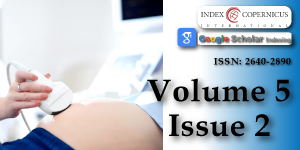Comparision of intra cervical PGE2 gel and transcervical Foley’s catheter for pre-induction cervical ripening
Main Article Content
Abstract
Introduction: Induction of labour is a common obstetric intervention, occurring in approximately 25% of term pregnancies in developing countries. Pharmacological and mechanical methods commonly used are prostaglandin preparations (PGE1 and PGE2) and various intracervical catheters (single or double balloon), respectively.
Material and methods: Study was conducted in Siliguri District Hospital, Siliguri, Darjeeling, west Bengal. 100 antenatal woman admitted in obstetrics ward with pog more than 37 weeks were taken for study after applying inclusion and exclusion criteria. 50 were induced with cerviprime gel and 50 with intracervical foley catheter. Statistical analysis done.
Results: Mean interval between treatment initiation and delivery was not statistically significant, tachysystole was more common in group B women, rate of LSCS and NVD was similar in both groups.
Conclusion: It can be concluded from the present study that Foley’s catheter (mechanical) and prostaglandin E2 gel [pharmacological] both are effective agents for preinduction cervical ripening which substantially improve the bishops score and increase the chances of successful labour induction. There is no significant difference in their efficacy, mode of delivery and perinatal outcome.
Article Details
Copyright (c) 2022 Singh V, et al.

This work is licensed under a Creative Commons Attribution 4.0 International License.
Spong CY, Berghella V, Wenstrom KD, Mercer BM, Saade GR. Preventing the first cesarean delivery: summary of a joint Eunice Kennedy Shriver National Institute of Child Health and Human Development, Society for Maternal-Fetal Medicine, and American College of Obstetricians and Gynecologists Workshop. Obstet Gynecol. 2012 Nov;120(5):1181-93. doi: 10.1097/aog.0b013e3182704880. PMID: 23090537; PMCID: PMC3548444.
Gary CF, Kenneth LJ, Steven BL, Catherine SY, Jodi DS, Barbara HL. Williams Obstetrics. 24th Edition, Chapter 26; 2014: 525.
Martin JA, Hamilton BE, Sutton PD, Ventura SJ, Menacker F, Kirmeyer S. Births: final data for 2006. National vital statistics reports: US department of health and human services—Centers for Disease Control and Prevention.
Alfirevic Z, Kelly AJ, Dowswell T. Intravenous oxytocin alone for cervical ripening and induction of labour. Cochrane Database Syst Rev. 2009 Oct 7;2009(4):CD003246. doi: 10.1002/14651858.CD003246.pub2. PMID: 19821304; PMCID: PMC4164045.
Arias F, Bhide AG, Arul kumaran S, Damania K, Daftary SN, editors. Arias' Practical Guide to High-Risk Pregnancy and Delivery-E-Book: A South Asian Perspective. Elsevier Health Sciences; 2015 Jan 29.
WorldHealthOrganization.Departmentofreproductivehealthandresearch.WHOrecommendations for induction of labour. Geneva, Switzerland: World Health Organisation; 2011:32.
Trofatter KF Jr, Bowers D, Gall SA, Killam AP. Preinduction cervical ripening with prostaglandin E2 (Prepidil) gel. Am J Obstet Gynecol. 1985 Oct 1;153(3):268-71. doi: 10.1016/s0002-9378(85)80111-3. PMID: 3901764.
Onge RD, Connors GT. Preinduction cervical ripening: a comparison of intracervicalprostaglandinE2gelversustheFoleycatheter.AmericanJournalofObstetrics&Gynecology.1995 Feb 1; 172(2):687-90.
Hamilton J. Historical review of British obstetrics and gynecology. Edinburg: Livingstone; 1954; 1800-1950.
Boulvain M, Kelly A, Lohse C, Stan C, Irion O. Mechanical methods for induction of labour. Cochrane Database Syst Rev. 2001;(4):CD001233. doi: 10.1002/14651858.CD001233. Update in: Cochrane Database Syst Rev. 2012;3:CD001233. PMID: 11687101.
Embrey MP, Mollison BG. The unfavourable cervix and induction of labour using a cervical balloon. J Obstet Gynaecol Br Commonw. 1967 Feb;74(1):44-8. doi: 10.1111/j.1471-0528.1967.tb03931.x. PMID: 6018096.
Obed JY, Adewole IF. The unfavourable cervix: improving the Bishop score with the Foley's catheter. West Afr J Med. 1994 Oct-Dec;13(4):209-12. PMID: 7756185.

